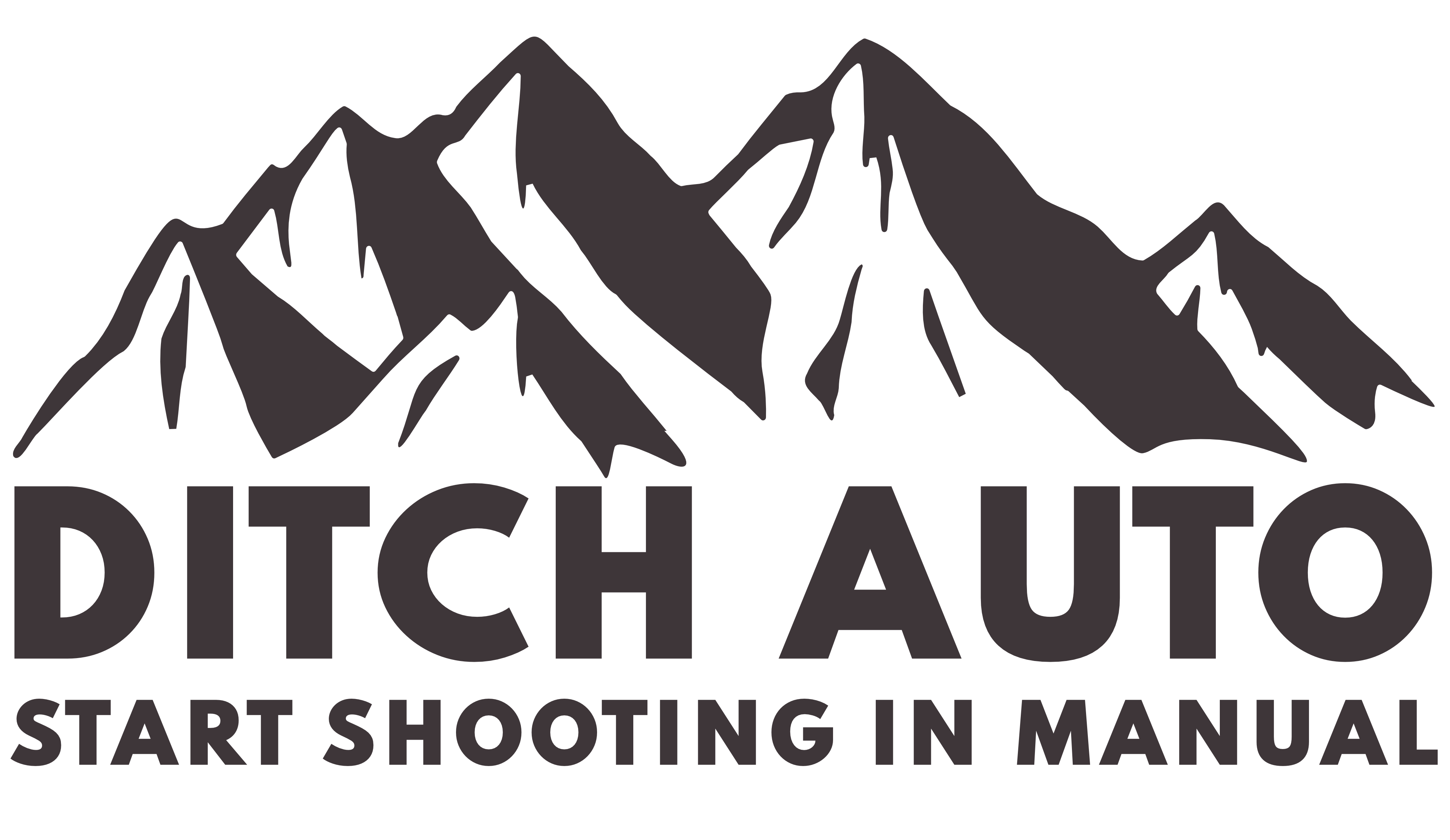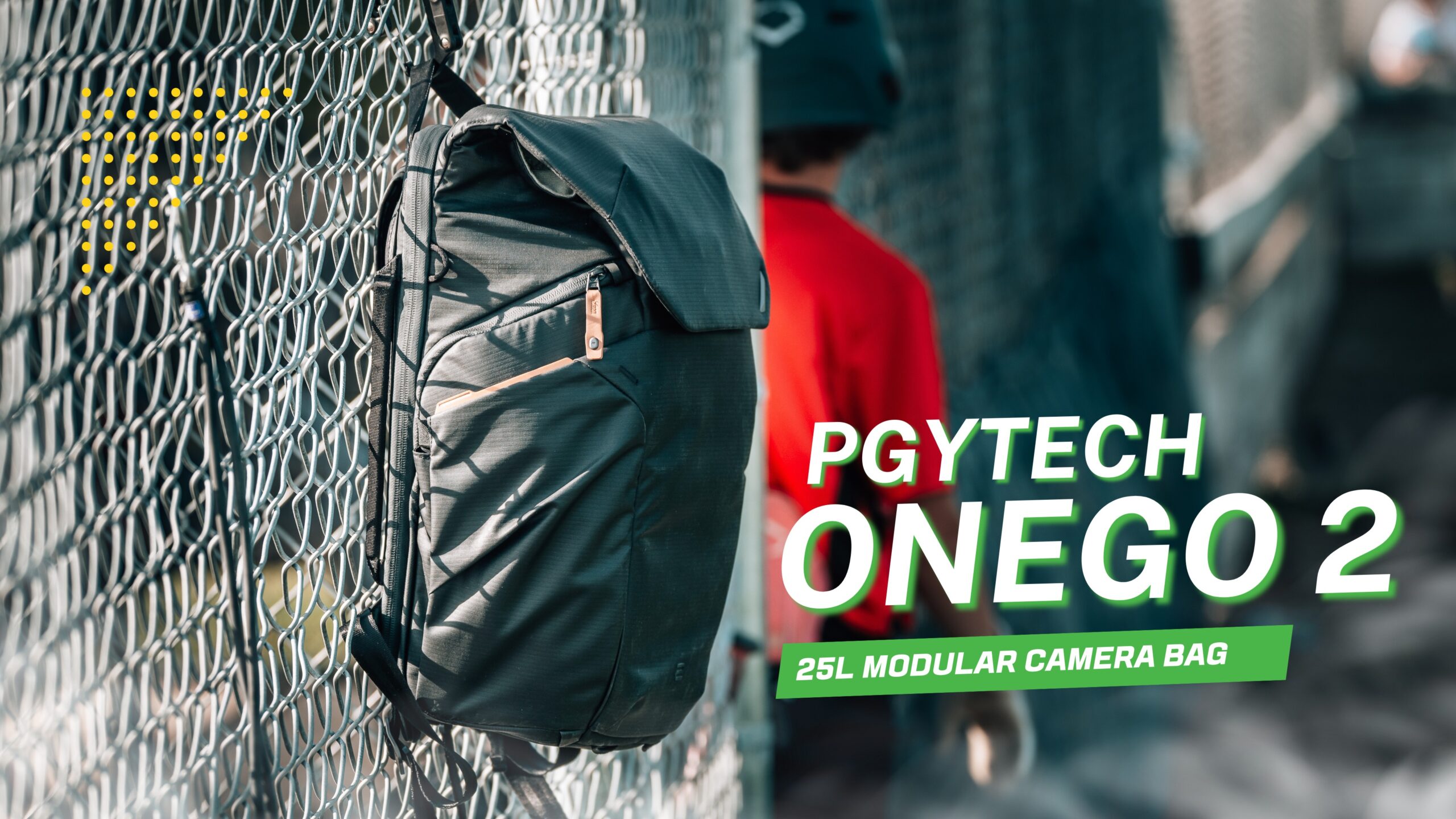Manual mode on the Sony A7IV scares many photographers. They stick to auto settings, missing out on their camera’s true capabilities. My journey with manual mode started similarly – hesitant and uncertain. Now, after years of shooting and teaching others, I see the difference it makes in creating consistently stunning images.
Master your Sony A7 IV with my Sony A7 IV Fast Start Guide.
The Sony A7 IV puts remarkable control at your fingertips. Aperture, shutter speed, ISO – these aren’t just technical terms, they’re creative tools waiting to be mastered. The camera handles high ISO settings beautifully, maintaining impressive quality even at 12,800.
Sure, auto mode feels safe. Like training wheels on a bicycle, it serves a purpose. But learning to balance the exposure triangle opens up possibilities that auto settings simply can’t match. This becomes especially clear in tricky lighting situations where auto settings struggle to capture what your eye sees.
Photography students often tell me about their fear of manual mode. Through teaching hundreds of photographers, I’ve developed a straightforward approach to understanding these controls. This guide breaks down every setting on your Sony A7 IV, whether you’re capturing portraits, landscapes, or fast-moving subjects.
Ready to take control? Let’s explore what your camera can really do.
Understanding Manual Mode Controls
The Sony A7 IV reminds me of a well-designed cockpit – everything you need within reach, yet each control serves a specific purpose. Finding manual mode is straightforward – just rotate the mode dial to “M”. This simple action unlocks complete control over aperture, shutter speed, and ISO settings.
My favorite part about shooting in manual mode is how the front and rear dials work together. Think of them as the primary steering wheels for your creative vision. The front dial handles aperture while the rear manages shutter speed. The camera also includes a dedicated control wheel and custom buttons that make shooting feel natural, like playing a familiar instrument.
Where to find manual mode settings
The mode dial sits prominently on top of the camera, much like a captain’s wheel. I particularly love the Function (Fn) menu – it’s like having a customized dashboard with 12 quick-access settings right at the bottom of your screen. When I’m shooting fast-moving subjects or changing lighting conditions, this menu becomes my best friend.
Key dials and buttons for manual control
The camera’s layout includes these essential controls:
- Front and rear dials for primary exposure settings
- Control wheel with customizable directional buttons
- AEL (Auto Exposure Lock) button
- Multi-selector center button
- Custom buttons (C1-C4) for quick access
Setting up custom buttons for faster access
Here’s where the A7 IV really shines – you get 13 customizable controls. It’s like having your own personal workshop where every tool can be placed exactly where you want it.
The flexibility extends further – you can assign different functions to the same button for photo and video modes. For example, I set my C1 button to control focus modes when shooting stills but switch it to white balance for video work. The rear control wheel buttons also accept new assignments, though they come with pre-labeled functions for ISO, drive mode, and display information.
Want to customize? Head to MENU → Setup → Operation Customize → Custom Key/Dial Set. Pick your button and choose from the extensive function list. The camera even shows you exactly where each button lives as you make your selections.
Setting Up Your Base Settings
File formats and viewfinder settings might sound boring, but they’re like choosing the right foundation for a house. After years of shooting with the A7 IV, I’ve learned these initial choices make a huge difference in both image quality and shooting experience.
Choosing the right file format
The A7 IV gives you several file format options. RAW vs JPEG isn’t just a technical choice – it affects how much flexibility you’ll have later. The camera offers three RAW flavors:
- Uncompressed RAW: Complete image data, but eats storage space like crazy
- Lossless Compressed: My go-to choice – full quality with smaller files
- Compressed RAW: Half the file size, barely noticeable quality difference
I’ve found lossless compressed RAW hits the sweet spot between quality and storage efficiency. For important shoots, I love using both card slots – RAW to one, JPEG backup to another. This setup has saved me more than once.
JPEG shooters get options from standard to extra fine. The HEIF format promises better compression while keeping quality high. Just watch out – some editing software still struggles with HEIF files.
Setting up the viewfinder display
The viewfinder setup makes or breaks your manual mode experience. Trust me on this one – turn “Setting Effect ON” first. Seeing exposure changes in real-time through the viewfinder changes everything. It’s like having a preview of your final image before pressing the shutter.
Live view customization helps nail exposure every time. When using flash, you’ll choose between “exposure set & flash” or “exposure setting only” modes. The first shows the scene with flash, while the second reveals just ambient light. This distinction becomes crucial when balancing flash with natural light.
The exposure graph (-5 to +5) in the viewfinder becomes your trusted friend. Sometimes I catch myself relying on it more than the actual scene – it’s that helpful for fine-tuning exposure.
Don’t forget viewfinder brightness and color temperature adjustments. These settings might seem minor, but they’re essential for accurate exposure preview. Getting these base settings right creates a solid foundation for exploring your A7 IV’s manual capabilities.
Mastering Aperture Control
Aperture fascinates me – it’s like the pupil of your eye, controlling both how much light enters and what stays in focus. The A7 IV makes these adjustments feel natural once you understand the basics.
How to change aperture on Sony A7IV
The front dial becomes your primary aperture control in manual mode. Turn it clockwise, the f-number goes up; counterclockwise, it goes down. The camera follows standard f-stops: F2, F2.8, F4, F5.6, and F8.
Sometimes photographers ask me why their aperture won’t change. First thing I check – is the lens aperture ring set to ‘A’ position? This simple setting trips up even experienced shooters. I love how the camera shows aperture changes instantly on screen or in the viewfinder. It’s like having a preview of your creative decisions.
When to use different f-stops
F-stops confused me when I started photography. Now I see them as creative tools affecting two main things:
- Light Control: Higher f-numbers let in less light. Think of it like a water faucet – F8 to F5.6 doubles the flow of light
- Depth of Field: Lower f-numbers (like F2.8) create that dreamy background blur perfect for:
- Portrait shots where you want the background melted away
- Making subjects pop from their surroundings
- Creating those beautiful bokeh circles everyone loves
Higher f-numbers (F8-F16) work better for:
- Landscapes where you want everything sharp
- Building photos needing detail everywhere
- Group shots where everyone needs to be in focus
Wider apertures shine in low light. They let you use faster shutter speeds, helping avoid blurry photos from camera shake. When light gets scarce, opening up the aperture often works better than cranking up ISO.
Starting out? Try aperture priority mode (A). It’s like training wheels – you control the aperture while the camera handles shutter speed. This helped me understand depth of field without juggling all exposure settings at once.
Each lens comes with its lowest possible f-number – that’s its maximum aperture. Fast lenses with lower numbers give you more options in dim light and create more dramatic background blur. I learned this the hard way when I couldn’t get the blur I wanted with a slower lens.
Working with Shutter Speed
Shutter speed reminds me of a conductor’s baton – it orchestrates how motion appears in your final image. The shutter works like stage curtains, controlling exactly how long light hits your sensor.
Finding the shutter speed dial
The rear control wheel handles shutter speed on the A7IV. Think of it like a volume control – outward rotation makes images darker (faster speeds), inward makes them brighter (slower speeds). The bottom part of this wheel becomes your go-to adjustment point.
The muscle memory thing surprised me at first. After a few weeks of shooting, my fingers found the controls without looking – that inward-outward movement becomes second nature through the viewfinder.
Selecting the right speed for different scenes
Different situations demand different speeds. Here’s what I’ve learned:
- Fast-Moving Subjects: Sports and action need quick speeds to freeze motion. Sometimes I’ll push the speed as high as possible just to catch that perfect moment.
- Low-Light Situations: Fireworks and night shots require patience and slower speeds. My tripod has saved countless shots here – camera shake becomes your worst enemy.
- Creative Effects: Slow speeds turn waterfalls silky and car lights into rivers of color. These shots taught me that motion blur isn’t always bad.
Indoor shooting gets tricky with artificial lights. The A7IV helps handle flickering by suggesting specific speeds:
- 50 Hz environments: Use 1/50 or 1/100 second
- 60 Hz environments: Select 1/60 or 1/125 second
I love using manual mode with AUTO ISO – the camera adjusts sensitivity based on my chosen shutter speed. The exposure meter becomes your friend here, showing “+/-” to guide adjustments.
For those magical long exposures of fireworks or star trails, BULB mode keeps the shutter open while you hold the button. It’s like painting with time – anything beyond 30 seconds needs this mode.
Here’s a tip I learned the hard way: slower speeds multiply the risk of blur from both camera shake and subject motion. Start with this rule: keep shutter speed faster than 1 divided by your focal length. It’s saved me from many blurry shots while learning.
Understanding ISO Settings
ISO used to scare me. Those early days of digital photography, watching noise creep into my images as I pushed ISO higher – it wasn’t pretty. The A7IV changed my perspective on high ISO shooting, and I’ve learned to embrace it as a creative tool rather than a last resort.
Locating ISO controls
The A7IV gives you several ways to control ISO. You’ll find it under Exposure/Color → Exposure → ISO sensitivity in the menu. I’ve set mine to the Fn menu for quick access – a lesson learned after missing too many shots diving through menus.
The camera uses a dual-gain ISO system with ISO 400 as the baseline for stills. This technology reminds me of having two separate sensors – each optimized for different light levels. The results speak for themselves in terms of dynamic range and noise control.
Best ISO ranges for different lighting
Through countless shoots, I’ve mapped out these ISO ranges:
- Base ISO (100-400): Clean as whistle – perfect when light’s on your side
- Mid-range (800-12800): Still looks great, handles most situations beautifully
- High ISO (12800-25600): Surprisingly usable, though you’ll see some noise
The A7IV handles high ISO better than its predecessor – ISO 12800 looks clean, and even 25600 produces usable images. Pretty impressive considering the increased resolution from 24 to 33 megapixels.
When light gets challenging, I start low and work my way up. Shooting in forests or overcast days, I’ll open up the aperture and slow down shutter speed before touching ISO.
Using Auto ISO in manual mode
Auto ISO became my secret weapon for event photography. Just roll the ISO wheel past manual values to ‘auto’, set your boundaries, and let the camera handle sensitivity.
In manual mode with Auto ISO, the camera adjusts sensitivity based on your chosen aperture and shutter speed. Watch for the blinking ISO indicator – it’s telling you when you’re asking too much from the exposure settings.
For events and changing light, I set Auto ISO boundaries between 100-12800. This keeps image quality consistent while giving the camera room to adapt.
RAW shooting saved me countless times at high ISOs. Modern noise reduction software works wonders – those high ISO shots I used to trash now clean up beautifully in post.
Real-World Shooting Practice
Theory helps, but real shooting scenarios taught me more than any manual ever could. Let’s walk through some common situations where manual mode makes all the difference.
Indoor photography settings
Indoor lighting used to drive me crazy until I discovered a few reliable approaches. Anti Motion Blur mode works like magic, taking six quick shots and combining them to cut noise. When shooting manual, I start with the widest aperture and bump up ISO if things look blurry.
Flash photography indoors needs a gentler touch. P-mode with 1/30 second shutter speed works well, keeping aperture between f/4.0-f/5.6 and ISO 400-800. TTL flash with -1 or -2 compensation prevents that deer-in-headlights look. Those fluorescent lights? They need specific shutter speeds:
- 50 Hz environments: 1/50 or 1/100 second
- 60 Hz environments: 1/60 or 1/125 second
Outdoor daylight settings
Bright sunlight offers perfect practice conditions. My go-to starting point: ISO 100 and f/8, then adjust shutter speed until exposure looks right. These settings rarely fail for general shooting.
Light changes fast outdoors. Auto ISO between 100-12800 keeps things manageable while maintaining quality. Landscape shots love f/11 – everything stays sharp from front to back.
Low-light photography settings
Night photography scared me at first. Superior Auto mode helps beginners by combining multiple shots automatically. Hand-held Twilight mode does something similar, helping tame noise and blur.
Manual control at night? Here’s what works for me:
- Open that aperture wide
- Keep shutter speed between 1/60 to 1/160 second
- Play with ISO range from 3000 to 12800 depending on available light
Action photography settings
Sports and action shots demand quick thinking. My recipe for success:
- Shutter Speed Priority: Nothing below 1/250 second if you want to freeze motion
- Focus Settings: Continuous AF (AF-C) becomes your best friend
- ISO Management: Auto ISO maxing at 6400 keeps exposure consistent
- Burst Mode: Because you never know which frame catches the perfect moment
Shooting telephoto action? I’ll take a sharp, noisy shot over a clean, blurry one any day. Modern software works wonders with noise anyway.
Watch those atmospheric conditions with long lenses. Warm afternoons create heat waves that blur everything. Early mornings or evenings give cleaner shots – the air’s more stable then.
Conclusion
Manual mode scared me once. Now it feels like an old friend – sometimes challenging, but always rewarding. The A7IV’s controls for aperture, shutter speed, and ISO work together like instruments in an orchestra, each playing its part in creating the final image.
My journey with manual mode taught me patience. Those early frustrating shots where nothing worked right? They taught me more than my successes. Start simple – bright daylight, stationary subjects. Work your way up to those tricky indoor shots or fast-moving subjects. Each mistake becomes a lesson, each success builds confidence.
The A7IV surprised me with its ability to grow alongside my skills. Whether you’re just starting or have years of experience, this camera adapts to your journey. Want to learn more? My free course Ditch Auto dives deeper into manual mode mastery. The scenarios we covered here will help build both technical skills and creative vision.
Sometimes I look back at my early manual mode attempts and smile. Those shaky, blurry shots remind me how far I’ve come. Give yourself time to experiment, to fail, to learn. Manual mode isn’t just about settings – it’s about seeing light differently, understanding your tools deeply, and creating images that match your vision.
The journey takes time, but trust me – it’s worth every step.
FAQs
Q1. How do I access manual mode on the Sony A7IV? To access manual mode, rotate the mode dial on top of the camera to the “M” position. This enables full control over aperture, shutter speed, and ISO settings.
Q2. What are the key controls for manual shooting on the Sony A7IV? The main controls for manual shooting are the front dial (typically for aperture), rear dial (for shutter speed), and the ISO button. You can also customize buttons for quick access to frequently used settings.
Q3. How can I achieve proper exposure in manual mode? To achieve proper exposure, balance the exposure triangle: aperture, shutter speed, and ISO. Use the camera’s exposure meter as a guide, adjusting these settings until the indicator shows a balanced exposure.
Q4. What ISO settings work best for different lighting conditions? For optimal image quality, use ISO 100-400 in good light. In moderate lighting, ISO 800-12800 maintains good quality. For low-light situations, ISO 12800-25600 can produce acceptable results, though noise may increase.
Q5. How can I capture fast-moving subjects in manual mode? For action photography, use a fast shutter speed (above 1/250 second) to freeze motion. Set the focus mode to Continuous AF (AF-C), enable Auto ISO with an upper limit of 6400, and use burst mode to capture peak action moments.


